Remington 700 SPS Stainless 7mm 3 Round Bolt Action Rifle, Fixed Overmolded Grip Panels – 27271 For Sale
$689.98
The Remington 700 SPS Stainless 7mm 3 Round Bolt Action Rifle, model 27271, is an affordable yet high-performance firearm that builds on the iconic Model 700’s legacy. This Special Purpose Synthetic (SPS) edition features an improved ergonomic synthetic stock for better handling and functionality, while the bead-blasted 416 stainless steel barreled action is robust and prepared for scope customization. Its stainless steel construction ensures durability in all weather conditions, and the rifle’s internal components are corrosion-resistant. The X-Mark Pro externally adjustable trigger allows for precise customization, and swivel studs provide easy sling attachment. With features like the “three rings of steel” for reliability and excellent out-of-the-box accuracy, the Remington 700 SPS Stainless is a superb choice for both enthusiasts and professionals.
What does sps mean in Remington 700?
In the Remington 700, “SPS” stands for “Special Purpose Synthetic.” This designation indicates that the rifle comes with a synthetic stock, which is designed for durability and to withstand various weather conditions, making it suitable for practical and rugged use.
Which Remington 700 triggers are recalled?
The Remington Model 700 rifles equipped with the X-Mark Pro (XMP) triggers have been recalled due to safety concerns. The recall was issued because the triggers could potentially discharge without a trigger pull, posing a risk of injury or death. It is important for owners of these rifles to contact Remington for inspection and repair. Always check the latest and official sources or the Remington website for further details or updates regarding recalls.
Why are Remington 700 so expensive?
The Remington 700 can be expensive for several reasons:
1. **Reputation:** The Remington 700 has a long-standing reputation for accuracy, reliability, and quality, making it a popular choice among hunters, sport shooters, and even military and law enforcement agencies.
2. **Precision Engineering:** The rifles are often manufactured with high standards of engineering, resulting in precise and consistent performance. This level of craftsmanship adds to their cost.
3. **Materials:** High-quality materials used in construction, such as premium-grade steel and advanced synthetic stocks, can increase production costs.
4. **Customization Options:** The platform supports a wide range of aftermarket parts and customization, which can drive up the price, especially for models with factory upgrades or enhancements.
5. **Versatility:** The 700 series offers a wide variety of models with different calibers and configurations, catering to different needs and preferences, which can also affect pricing.
6. **Heritage and Demand:** As a legacy rifle that has been in production since 1962, its historical significance and ongoing demand contribute to its higher price point.
7. **Economic Factors:** As with any product, economic factors such as manufacturing costs, inflation, and market demand can influence pricing.
These factors combine to make the Remington 700 a premium product in the market for rifles.
Which Remington 700 does the military use?
The military primarily uses the Remington Model 700 as the basis for the M24 Sniper Weapon System. The M24 is a bolt-action rifle that has been used by the U.S. Army and other military units. Another variant that has been employed is the M40, which is used by the U.S. Marine Corps. Both of these are based on the Remington 700 platform.
Does the Remington 700 SPS have a heavy barrel?
Yes, the Remington 700 SPS Varmint model is equipped with a heavy barrel, designed for better heat dissipation and improved accuracy during sustained shooting. However, not all SPS models have a heavy barrel, so it’s important to verify the specific version you are considering.
Do snipers use Remington 700?
Yes, snipers do use the Remington 700. This bolt-action rifle is popular among military and law enforcement snipers due to its reliability, accuracy, and modularity. Variants of the Remington 700 have been used by multiple armed forces around the world.
What is the controversy with the Remington 700?
The controversy surrounding the Remington 700 centers on allegations that the rifle has a faulty trigger mechanism, specifically the “Walker Trigger” design, which can cause the firearm to discharge unintentionally without the trigger being pulled. Reports of such incidents have resulted in various lawsuits, and Remington has faced significant legal and financial challenges as a result. Critics argue that the company was aware of the defect for decades but failed to take appropriate action to ensure customer safety. In response, Remington has issued recalls and settlements, but the issue remains a topic of concern and discussion within the firearms community.
What years did Remington have trigger problems?
Remington experienced trigger problems primarily with the Model 700 rifle, and these issues gained significant attention in the 2010s. The problems were linked to the “Walker Trigger” design, which was introduced in 1946 and used until the early 2000s. However, reports of unintentional discharges became more prominent in the late 2000s and 2010s, leading to legal actions and recalls in 2014 and 2015.
Are old Remington 700 rifles safe?
Old Remington 700 rifles have been subject to scrutiny due to concerns regarding their trigger mechanism, specifically the Walker Fire Control system. Some users have reported unintentional discharges without the trigger being pulled. This issue led to lawsuits and a recall of certain models.
However, many owners use their Remington 700s without experiencing any problems. Ensuring your firearm is safe can involve:
1. **Recall Check**: Determine if your specific model is part of any recalls.
2. **Inspection**: Have a qualified gunsmith inspect the trigger mechanism.
3. **Modification**: Consider having the trigger mechanism replaced or modified to ensure safety if it uses the Walker system.
4. **Usage Safety**: Always follow standard firearm safety practices, such as keeping it pointed in a safe direction and ensuring it is unloaded when not in use.
If you own an old Remington 700, it’s important to be informed of the potential issues and act accordingly to ensure safety.
What is the defect of the Remington 700?
The defect associated with the Remington Model 700 rifle is primarily related to its trigger mechanism, known as the Walker Trigger. Reports and accusations over the years have claimed that the rifle can discharge without the trigger being pulled, due to a design flaw. This issue has led to numerous lawsuits and a significant recall of rifles by Remington. The manufacturer eventually offered to replace certain triggers to address safety concerns.
How can you tell how old is your Remington 700?
To determine the age of your Remington 700, you can check the barrel date code, which is a set of letters stamped on the barrel of the rifle. These letters correspond to a specific month and year. Here’s how you can decode it:
1. **Locate the Code**: The barrel date code is typically found on the left side of the barrel, just forward of the receiver.
2. **Decode the Month**: The first letter in the code represents the month of manufacture:
– B = January
– L = February
– A = March
– C = April
– K = May
– P = June
– O = July
– W = August
– D = September
– E = October
– R = November
– X = December
3. **Decode the Year**: The next letter(s) correspond to the year of manufacture. Remington has used different letter codes over the years, so you might need to refer to a Remington manufactured date chart for the specific year.
4. **Cross-reference**: Once you have the month and year from the code, you can cross-reference with Remington’s serial number records or a detailed production date list to confirm.
If you’re uncertain about interpreting the code or if the code is unclear, contacting Remington’s customer service or consulting a gunsmith specializing in Remington firearms might be helpful.
What is the best selling Remington rifle?
The best-selling Remington rifle is often considered to be the Remington Model 700. This bolt-action rifle is renowned for its accuracy, reliability, and versatility, making it popular among hunters, marksmen, and law enforcement agencies.
What is the difference between a 700 ADL and SPS?
The difference between a 700 ADL (Address Data Listing) and SPS (Standard Positioning Service) primarily lies in their contexts and applications:
1. **700 ADL:** This typically refers to a document or report listing specific addresses or data points. The term “ADL” can have various interpretations depending on its specific use case, but generally, it involves detailed data listings related to addresses, often used in logistics, planning, or communications.
2. **SPS (Standard Positioning Service):** This is one aspect of the Global Positioning System (GPS) that is available to civilian users. It provides less accurate positioning and timing information compared to the Precise Positioning Service (PPS) available to military users. SPS is widely used for navigation and mapping in consumer devices like smartphones and car navigation systems.
In summary, a 700 ADL relates to data management and listings, while SPS is a service within the GPS framework used for navigation and positioning. They serve very different purposes and operate within different domains.
When was the Remington 700 SPS made?
The Remington Model 700 SPS (Special Purpose Synthetic) was introduced in 2005.
What is the difference between 700 sps and sps varmint?
The primary difference between the Remington 700 SPS (Special Purpose Synthetic) and the Remington 700 SPS Varmint lies in their intended use and design features.
1. **Purpose**:
– **700 SPS**: This is a general-purpose hunting and shooting rifle designed for versatility across various shooting scenarios.
– **700 SPS Varmint**: Specifically designed for varmint hunting, which requires high accuracy over long distances.
2. **Barrel**:
– **700 SPS**: Typically has a standard contour barrel.
– **700 SPS Varmint**: Features a heavier, longer barrel, which improves accuracy for long-range shots and helps with heat dissipation during extended shooting sessions.
3. **Stock**:
– Both models are equipped with synthetic stocks, but the SPS Varmint may have slight modifications to enhance stability and support for precision shooting.
4. **Caliber Options**:
– While both models offer a range of calibers, the Varmint version might be chambered in calibers that are more suited to varmint hunting, such as .22-250 or .223.
5. **Weight**:
– The SPS Varmint is typically heavier due to the heavier barrel, which is beneficial for stability during shooting but might be less convenient to carry over long distances compared to the standard SPS.
Overall, while both are part of the Remington 700 series, the SPS Varmint is specifically tailored for tactical or precision applications in varmint hunting, whereas the SPS is a more versatile, all-around model.
| Product Line | 700 SPS Stainless |
|---|---|
| Action | Bolt |
| Magazine Type | Hinged Floor Plate |
| Stock | Fixed Overmolded Grip Panels |
| Trigger Type | X-Mark Pro |
| Muzzle Type | Crowned |
| Twist | 1 |
| Hand Orientation | Right |
| Safety | Manual |
| Barrel Material | 416 Stainless Steel |
| Receiver Material | Stainless Steel |
| Stock Material | Synthetic |
| Barrel Finish | Matte Stainless |
| Stock Finish | Matte Black |
| Length of Pull | 13-3/8" |
| Overall Length | 46-1/2" |
| Drop at Comb | 1-1/8" |
| Drop at Heel | 1-3/8" |
Be the first to review “Remington 700 SPS Stainless 7mm 3 Round Bolt Action Rifle, Fixed Overmolded Grip Panels – 27271” Cancel reply
Related products
Remington 700 SPS Stainless
Remington 700 SPS Stainless 243 Win 4 Round Bolt Action Rifle, Fixed Overmolded Grip Panels – 27263
Remington 700 SPS Stainless
Remington 700 SPS Stainless
Remington 700 SPS Stainless 7mm 08 4 Round Bolt Action Rifle, Fixed Overmolded Grip Panels – 27265
Remington 700 SPS Stainless
Remington 700 SPS Stainless 223 Rem 5 Round Bolt Action Rifle, Fixed Overmolded Grip Panels – 27133
Remington 700 SPS Stainless
Remington 700 SPS Stainless
Remington 700 SPS Stainless 270 Win 4 Round Bolt Action Rifle, Fixed Overmolded Grip Panels – 27267
Remington 700 SPS Stainless
Remington 700 SPS Stainless
Remington 700 SPS Stainless 300 RUM 3 Round Bolt Action Rifle, Fixed Overmolded Grip Panels – 27140
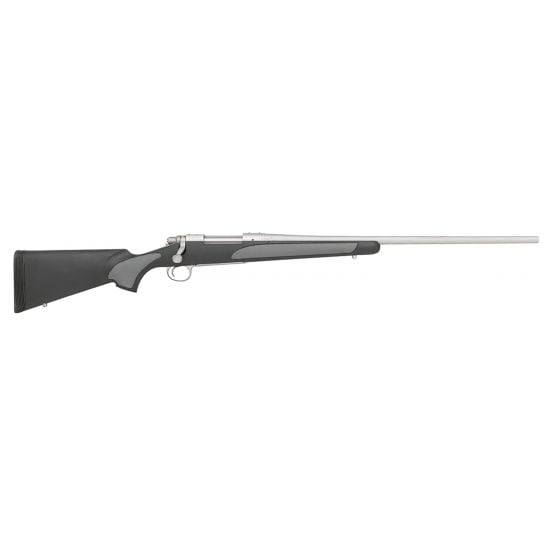
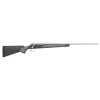
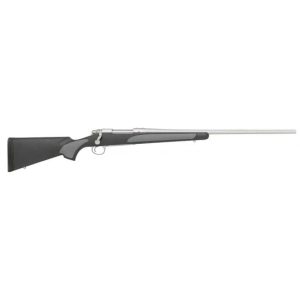
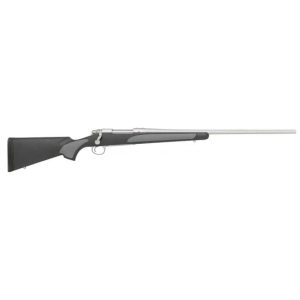
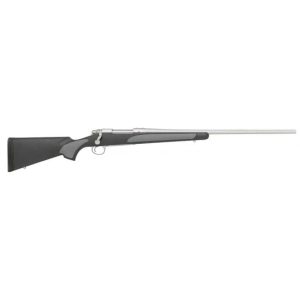
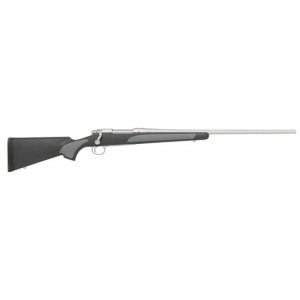
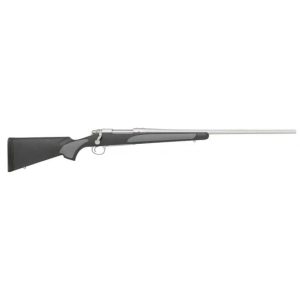
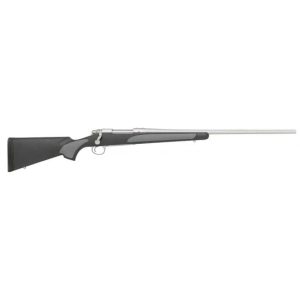
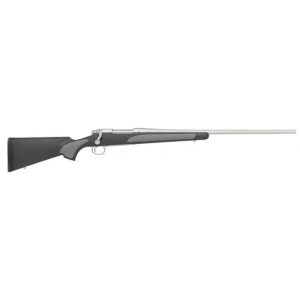
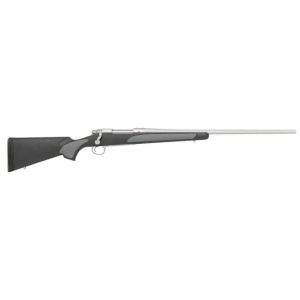
Reviews
There are no reviews yet.